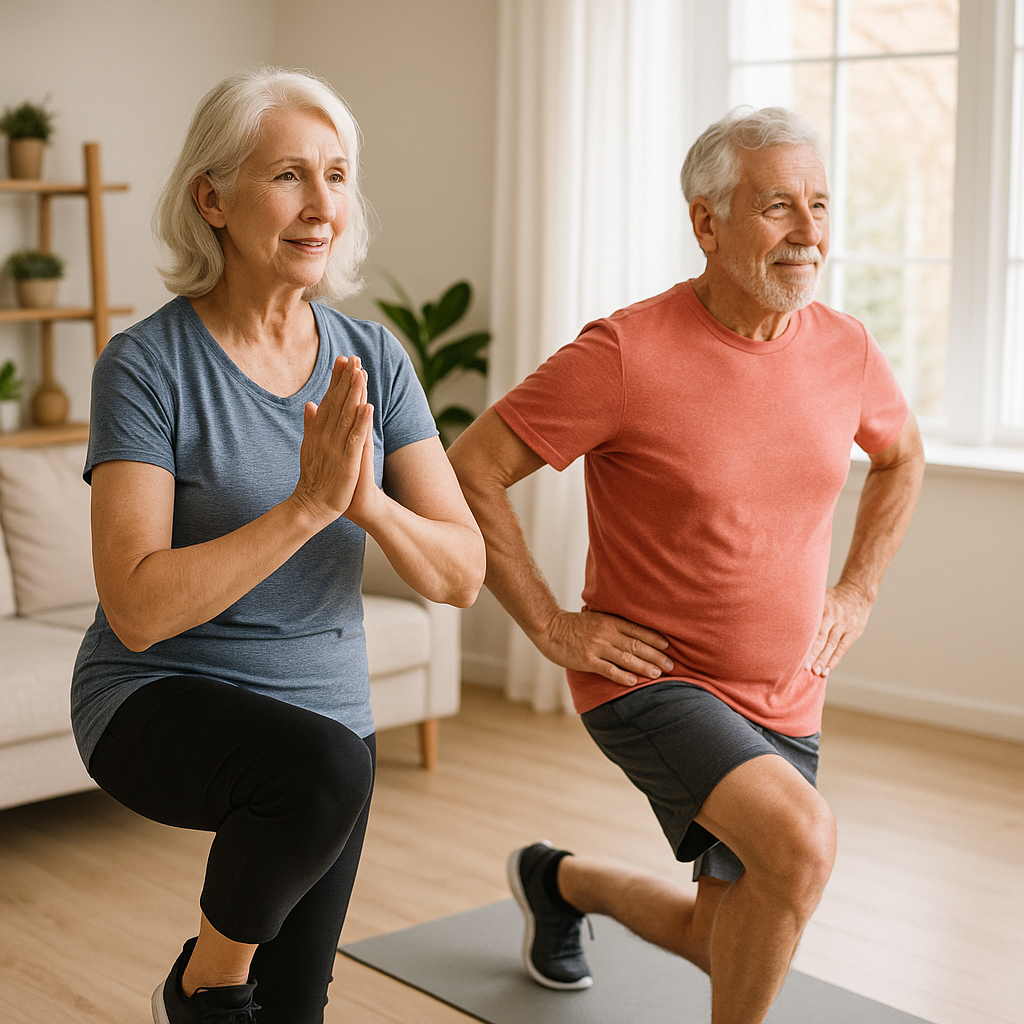HIIT for Seniors: Safe and Effective Interval Training for Older Adults

High-Intensity Interval Training (HIIT) isn't just for the young and athletic. In fact, research shows that properly modified HIIT workouts for seniors may be one of the most effective exercise strategies for older adults. These time-efficient workouts can help combat age-related decline, boost functional fitness, and maintain independence well into the golden years.
This guide explores how seniors can safely implement HIIT into their fitness routines for remarkable results.
The Science: Why HIIT Benefits Seniors Specifically
Recent research confirms that older adults have much to gain from interval training:
- Mitochondrial Regeneration: A groundbreaking Mayo Clinic study found that HIIT increased mitochondrial capacity by nearly 70% in participants over 65—far surpassing the benefits seen in younger adults.
- Reversal of Age-Related Muscle Loss: Research in Cell Metabolism showed that HIIT significantly improved muscle protein synthesis in older adults, helping combat sarcopenia (age-related muscle loss).
- Cognitive Function: Studies indicate that HIIT may enhance cognitive performance and memory in seniors more effectively than moderate continuous exercise.
- Fall Prevention: The rapid coordination changes required in interval training improve balance, reaction time, and proprioception—all critical for preventing falls.
- Insulin Sensitivity: HIIT has been shown to improve insulin sensitivity in older adults, helping manage or prevent type 2 diabetes.
- Bone Density: Properly designed HIIT can deliver osteogenic (bone-strengthening) benefits without excessive impact.
Age-Appropriate HIIT: Key Considerations
Effective HIIT for seniors requires thoughtful adaptations:
- Relative Intensity: "High-intensity" means relative to the individual's capacity—not absolute intensity. For seniors, this might mean elevated breathing and effort, not maximum exertion.
- Longer Recovery: Older adults typically benefit from longer recovery intervals—often a 1:2 or 1:3 work-to-rest ratio rather than the 1:1 or 2:1 ratios used for younger adults.
- Low-Impact Options: Emphasis on minimal-impact exercises that reduce stress on joints while still elevating heart rate.
- Gradual Progression: Starting with shorter work intervals (10-20 seconds) and gradually building duration and intensity over several weeks.
- Balance Support: Using chairs, walls, or other stabilizing options during standing exercises if needed.
- Medical Clearance: Consulting healthcare providers before beginning, especially with pre-existing conditions.
Safe and Effective HIIT Exercises for Seniors
The best exercises for senior HIIT combine safety with effectiveness:
Cardio Options:
- Walking intervals (normal pace to brisk pace)
- Stationary cycling
- Recumbent cycling
- Water walking/swimming intervals
- Seated marching
- Modified step-ups
Strength Options:
- Chair squats
- Wall push-ups
- Seated rows with resistance bands
- Standing bicep curls
- Countertop/chair-assisted heel raises
- Seated knee extensions
- Glute bridges
4 Complete Senior-Friendly HIIT Routines
These workouts are designed specifically for older adults. Always begin with a 5-minute warm-up of gentle movement.
Workout 1: Seated HIIT (Perfect for Beginners)
Perform each exercise for 20 seconds, then rest for 40 seconds before moving to the next. Complete 2-3 rounds.
- Seated Marching
- Seated Arm Punches
- Seated Alternating Knee Extensions
- Seated Side Bends
- Seated Shoulder Presses (with or without light weights)
- Rest 2 minutes between rounds
Workout 2: Standing Chair-Supported Circuit
Perform each exercise for 30 seconds, rest for 60 seconds. Complete 2 rounds.
- Chair-Supported Squats
- Wall Push-ups
- Marching in Place
- Chair-Supported Side Leg Raises
- Standing Trunk Rotations
- Rest 2-3 minutes between rounds
Workout 3: Mixed Sitting and Standing (Intermediate)
Perform each exercise for 30 seconds, followed by 60 seconds of rest. Complete the circuit 2-3 times.
- Chair Sit-to-Stands (Modify: use hands if needed)
- Countertop Push-ups
- Alternating Step Touches
- Resistance Band Rows
- Standing Knee Raises (use chair for support if needed)
- Rest 3 minutes between rounds
Workout 4: Equipment-Based Circuit (Advanced Seniors)
Requires resistance bands and light dumbbells (1-5 lbs). Perform each exercise for 30 seconds, rest for 60 seconds. Complete 2 rounds.
- Band Chest Press
- Mini Squat to Overhead Press
- Stationary Bike or Walking in Place (moderate pace)
- Band Rows
- Lateral Steps with Band (around ankles)
- Rest 3 minutes between rounds
Safety Guidelines for Senior HIIT
Safety remains paramount for older adults trying HIIT:
- Rate of Perceived Exertion (RPE): Work intervals should feel challenging (6-8 out of 10) but not exhausting.
- Talk Test: You should be able to speak in short phrases, but not carry on a full conversation during work intervals.
- Joint Awareness: Stop if you experience joint pain (not to be confused with muscle fatigue).
- Hydration: Drink water before, during, and after your workout.
- Progressive Start: Begin with just 10-15 minutes total, including rest periods.
- Heart Rate Monitoring: Particularly important for those on medications that affect heart rate.
- Regular Assessment: Re-evaluate comfort and ability levels every few weeks.
When to Adjust or Scale Back
Listen to your body and modify as needed:
- If you experience dizziness or unusual shortness of breath
- If recovery between sessions takes more than 48 hours
- During periods of illness or unusual fatigue
- When recovering from an injury or surgery
- If you notice persistent joint pain
Timing is Key for Senior HIIT Success
The structure of intervals and rest periods is crucial for safety and effectiveness. Having a reliable timer eliminates the need to watch the clock while focusing on proper movement.
Perfect Timing for Senior HIIT
The Peak Interval app makes timing senior-friendly HIIT workouts simple and stress-free. Program longer rest periods, create gentle interval sequences, and focus completely on your form and balance rather than watching the clock.
Download Peak IntervalAge is just a number when it comes to high-intensity interval training. With appropriate modifications and safety precautions, seniors can experience remarkable improvements in health, mobility, and quality of life through these age-appropriate HIIT workouts. Remember that consistency trumps intensity—regular, moderate HIIT sessions are far more beneficial than occasional extreme efforts.